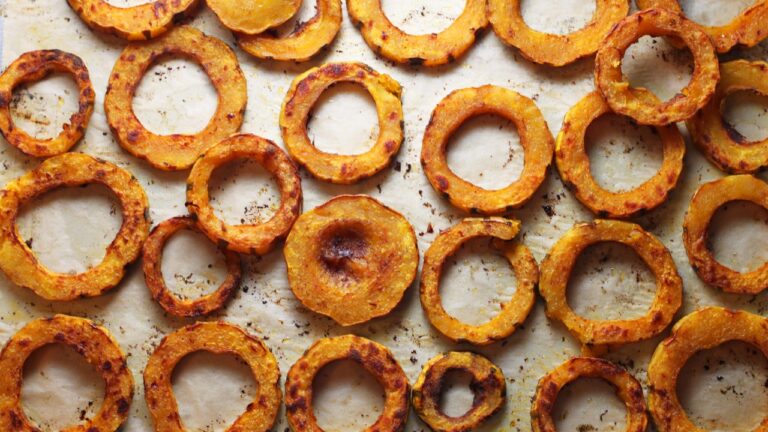How to Count Carbs to Control Diabetes – The Easy Way
Managing diabetes isn’t just about avoiding sugar. One of the most effective ways to maintain stable blood glucose levels is by learning how to count carbs to control diabetes – the easy way. Carb counting may seem overwhelming at first, but with the right approach, it becomes second nature. Understanding what carbs are, how they affect your body, and how to calculate them can be life-changing for anyone with type 1, type 2, or gestational diabetes.
Carbohydrates have a direct impact on blood glucose. Unlike fats and proteins, carbs break down quickly into sugar in the bloodstream. This doesn’t mean carbs are bad—they’re essential for energy—but controlling portion size and choosing the right type of carbs makes all the difference. Whether you’re newly diagnosed or refining your diabetes management strategy, mastering this skill is crucial.
This guide will simplify everything: what carbs to count, how to read food labels, meal planning tips, tools that help, and easy strategies to stay consistent. With real-life examples and a practical breakdown, you’ll be able to apply carb counting to your daily meals without stress or confusion.
What Are Carbohydrates?
Carbohydrates are one of the three main macronutrients in food, along with proteins and fats. There are three types:
Sugars – found naturally in fruits, milk, and added to sweets
Starches – found in grains, bread, pasta, potatoes, and some vegetables
Fiber – found in plant-based foods like whole grains, nuts, seeds, and vegetables
Carbs turn into glucose during digestion, raising your blood sugar. That’s why tracking them is vital for diabetes management. However, not all carbs are created equal. Complex carbs with fiber digest slower, keeping blood sugar more stable, while simple carbs spike it quickly.
Why Carb Counting Matters in Diabetes
Counting carbs helps you understand how food affects your blood sugar, so you can adjust your insulin (if needed), make informed food choices, and prevent blood sugar highs and lows. This approach is endorsed by the American Diabetes Association and is commonly used by dietitians and endocrinologists.
When you count carbs correctly, you gain more control over your A1C levels, reduce the risk of diabetes complications, and feel more in control of your energy and hunger. It allows flexibility in your diet—you don’t have to cut out all carbs, just learn to manage them wisely.
How Many Carbs Should You Eat?
There’s no one-size-fits-all answer. The number of carbs you need depends on age, weight, activity level, medication, and individual health goals. However, general guidelines suggest:
Men: 45–60 grams per meal
Women: 30–45 grams per meal
Snacks: 15–20 grams
Some people with diabetes choose a lower-carb approach (like 100–130g per day) for tighter glucose control. Always consult with a healthcare provider before making changes.
The Easy Way to Count Carbs
Now let’s break down how to count carbs to control diabetes – the easy way step by step.
Step 1: Learn to Read Nutrition Labels
Nutrition labels are your best tool. Here’s what to look for:
Serving Size – Always check what amount the label refers to
Total Carbohydrates – This includes all sugar, starch, and fiber
Dietary Fiber – Subtract fiber from total carbs to get net carbs
Sugars – Includes natural and added sugars
Sugar Alcohols – Sometimes subtracted if they don’t affect glucose
Example:
Total Carbs: 22g
Fiber: 5g
Net Carbs = 22 – 5 = 17g
This number (net carbs) is what impacts your blood sugar.
Step 2: Use Carb Counting Apps
Apps like MyFitnessPal, Carb Manager, MySugr, and Fooducate can make tracking much easier. You can scan barcodes, search for common foods, and log your meals. These tools are helpful for estimating portion sizes and spotting hidden carbs in processed foods.
Step 3: Keep a Food Log
A simple notebook or digital diary helps you stay consistent. Write down your meals, snacks, portion sizes, estimated carbs, and blood sugar levels after eating. Patterns will emerge over time, helping you fine-tune your diet.
Step 4: Understand Common Carb Counts
Memorizing rough carb values for common foods can help you count without needing a label every time:
1 slice of bread = 15g
1 cup cooked rice or pasta = 45g
1 small apple = 15g
½ cup cooked beans = 20g
1 cup milk = 12g
1 cup berries = 15g
½ cup mashed potatoes = 20g
1 cup non-starchy vegetables (broccoli, spinach, zucchini) = 5g
Step 5: Use the Plate Method
A visual guide that makes carb control easier. Fill half your plate with non-starchy vegetables, a quarter with lean protein, and the remaining quarter with healthy carbs like quinoa, whole grains, or sweet potatoes.
This method naturally keeps carbs in check without weighing or measuring every bite.
Step 6: Measure Portions
Use measuring cups, food scales, or comparison tricks (like a fist = 1 cup) to get accurate portion sizes. Carbs are counted per portion, so accuracy matters.
Step 7: Focus on High-Fiber Carbs
Whole foods like lentils, oats, berries, and vegetables contain fiber, which slows digestion and keeps blood sugar stable. Choose these over refined carbs.
Step 8: Plan Your Meals Ahead
Meal prepping or using a weekly planner helps you avoid last-minute high-carb decisions. Preparing balanced meals and knowing their carb content reduces uncertainty.
How to Count Carbs When Eating Out
Restaurant meals are often higher in carbs and sugar. Here’s how to stay on track:
Ask for nutrition information
Choose grilled over breaded or fried
Request dressing or sauces on the side
Substitute fries or bread with salad or vegetables
Watch portion sizes—consider sharing or boxing half
Many chains have online nutrition calculators. Use them ahead of time if possible.
Tips for Success
Start simple—begin with meals you eat often
Focus on progress, not perfection
Educate yourself on ingredients
Choose unprocessed, whole foods when possible
Stay hydrated and active
Work with a dietitian or diabetes educator
Monitor your glucose response after meals
Adjust insulin (if prescribed) based on carb intake
Don’t fear carbs—learn to manage them
Over time, counting carbs becomes intuitive. The more you practice, the less effort it takes to make good decisions.
Tools That Help with Carb Counting
Smartphone apps
Measuring cups and food scales
Carb counting pocket books
Glucose monitors (CGMs show real-time responses)
Food journaling templates
Meal prep containers with portion markings
In 2025, many diabetic-friendly devices can sync with your fitness trackers, insulin pumps, or CGMs to give a holistic view of how carbs affect your body.
Carbs to Watch Out For
Highly processed foods with hidden sugars like flavored yogurts, sugary cereals, fruit juices, granola bars, ketchup, and white bread often have more carbs than expected. Read labels carefully or use verified data sources when estimating.
Sample Low-Carb Day for Carb Control
Breakfast:
Scrambled eggs with spinach and avocado (5g)
1 slice low-carb toast (8g)
Black coffee or tea (0g)
Lunch:
Grilled chicken salad with olive oil dressing (10g)
1 small apple (15g)
Water or sparkling water (0g)
Snack:
Greek yogurt (unsweetened) with chia seeds (10g)
Dinner:
Baked salmon with roasted vegetables (10g)
½ cup cooked quinoa (20g)
Total: ~78g net carbs
This plan fits a low to moderate-carb lifestyle and offers energy, nutrients, and blood sugar control.
Final Thoughts
Learning how to count carbs to control diabetes – the easy way can empower you to take charge of your health without giving up the joy of eating. While it may feel confusing at first, with the help of tools, tracking methods, and a few smart strategies, carb counting becomes a valuable habit that fits into your everyday routine.
It allows for better control, more dietary freedom, fewer surprises, and improved long-term health outcomes. The key is consistency—keep learning, stay patient, and make adjustments as needed. Managing diabetes is a journey, and every step toward understanding your food is a step toward better control and greater well-being.
FAQs
1. What is carb counting for diabetes?
Carb counting is a method of tracking the number of carbohydrates you eat to manage blood sugar levels more effectively.
2. Why are carbs important for diabetics to track?
Carbs have the biggest impact on blood sugar. Knowing how much you eat helps prevent spikes and crashes.
3. How many carbs should a diabetic eat daily?
It depends on the person. A typical range is 130–180g per day, but some people prefer 100g or less. Always consult your doctor.
4. What are net carbs and how do I calculate them?
Net carbs = Total carbs – fiber. This gives a better idea of how many carbs will affect your blood sugar.
5. Can I eat sugar if I count carbs?
In moderation, yes. Sugar should be limited but can be part of your carb count for the day.
6. Do I need to avoid all fruits to control carbs?
No. Low glycemic fruits like berries, apples, and kiwi can be eaten in small amounts with meals.
7. Is carb counting only for people with type 1 diabetes?
No, it benefits anyone with diabetes, including type 2 and gestational diabetes.
8. Can I eat bread if I count carbs?
Yes, but choose whole grain or low-carb options and measure portions carefully.
9. What’s the easiest way to count carbs when dining out?
Use online nutrition guides or restaurant menus and aim for simple dishes with minimal sauces and dressings.
10. Do I need a dietitian to learn carb counting?
It’s helpful but not required. Many people learn through apps, books, or diabetes education classes.






